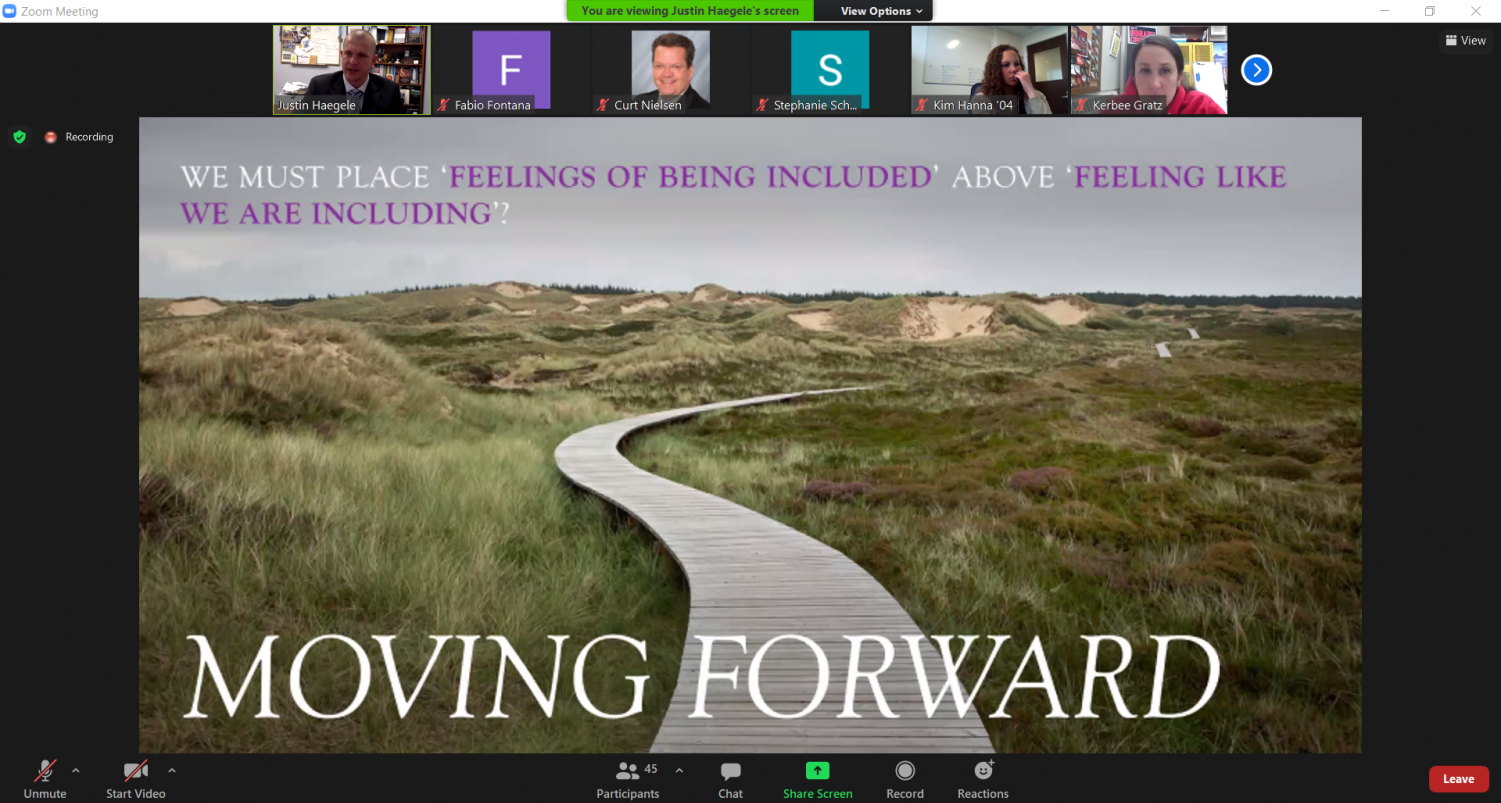Questioning the inclusiveness of Education
Apr 1, 2021
Leading this year’s Carlton-Mellichamp Lecture in Education, Justin Haegele gave three presentations on Tuesday, March 30 via Zoom.
An associate professor at Old Dominion University in Norfolk, Va. and an expert in adapted physical education, Haegele spoke to a group of providers, professors and UNI students about inclusion in the classroom.
The presentation focused on his research with visually impaired pupils in physical education (PE) classes. He also stated the data collected through his research can be used to understand the experience of children with disabilities in other classes.
Haegele’s participation in the lecture has been in the process of being planned since the fall of 2019 but had to be postponed due to COVID-19.
He began his talk by reflecting on the way his ideas on inclusion and his ideas for this lecture have changed during the past year and a half.
“‘Inclusion’ is a popular word, and it has a lot of implications for the way in which we educate kids, but it is really hard to define,” said Haegele. “My definition of ‘inclusion’ is in process, and I think it is really important that we continue to reconstruct our understanding of different educational philosophies and principles.”
Haegele’s position on integrated spaces of education was influenced by the confusion between “inclusion” and “integration.”
According to Haegele, “integration” refers to a placement, meaning the physical setting in which the learning occurs. “Inclusion,” on the other hand, is a philosophy. Teachers use inclusion to promote an environment in which students are able to feel a sense of belonging and acceptance.
“Inclusion is a subjective experience,” said Haegele. “We need to talk to students to know if they feel included in their classrooms. The passion I have is in amplifying the voices of persons with disabilities and understanding their experiences in various settings.
He explained, “Inclusion can happen both in integrated and self-contained settings.”
Haegele continued, “Just because two people are in the same place, and are experiencing the same activity, doesn’t mean they are experiencing it the same way.”
Most of the lecture focused on research studies Haegele and his team carried out in several U.S. states and even abroad in Brazil, Germany and South Korea. All of the professor’s research took place within the field of PE. Most of his research focused on students with visual impairments.
A broad range of subjects were interviewed, including both children and adults who were able to speak about their experience in integrated and self-contained schools.
“The reason why we often talk to adults is that they can reflect back on the feelings that they experienced in schools as kids but feel more comfortable telling us about their frustrations at the time. It is more challenging from the perspective of children. They are less willing to provide us with intimate information,” said Haegele.
Across all studies and geographical areas, Haegele described similar experiences students have undergone. These included being excluded from the activities in the classroom, a sense of frustration and bullying and marginalization from peers.
They also shared issues with their body image, largely due to the fact that they felt their bodies were being seen as flawed by their teachers.
“Many students got the feeling that the exclusion that they experienced in PE was not because of the teacher or the teacher’s beliefs, but because of their disability,” said Haegele. “Imagine that, as a child, thinking about why you are being told to sit on the bleachers during PE class and internalizing these feelings and thinking it is because of yourself rather than being able to identify that it is the teacher’s weakness.”
Moving forward with his research, Haegele expressed his desire to continue on children with visual impairments as well as expanding to other disabilities. He highlighted how in all of his research, integration has proven to not be the sole requirement for inclusion in the classroom.
“Scholars have the moral responsibility to abandon the inherent belief that inclusion is successful, problematize issues-related inclusion in education and develop an understanding of how to enhance inclusive experience within a variety of different educational contexts,” said Haegele. “We need to discuss where students want to be educated. I think students don’t get a say often enough.”e











